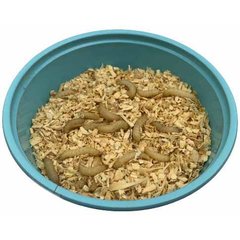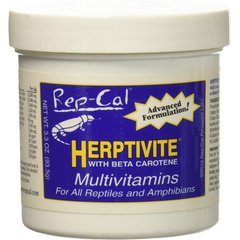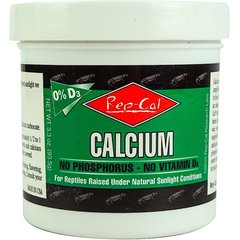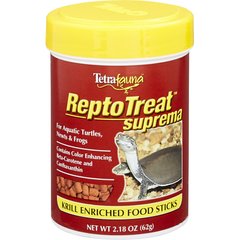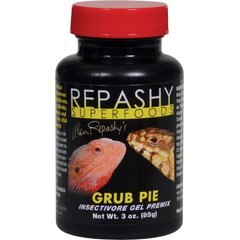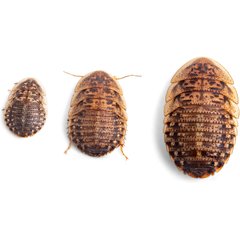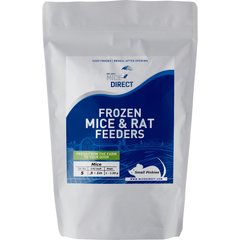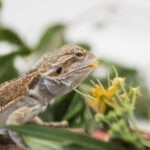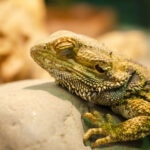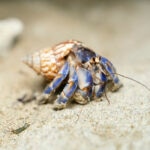What Do Salamanders Eat? Your Guide To Feeding a Pet Salamander

Photo by JasonOndreicka/iStock / Getty Images Plus via Getty Images
Salamanders—which look like long-bodied frogs that forgot to lose their tails—are unique animals that make wonderful, entertaining pets for the right pet parents.
But while most salamanders are relatively easy to care for, they have specific dietary needs. So what do salamanders eat?
The Typical Salamander Diet
Salamander are opportunistic hunters that sometimes lie in wait before ambushing prey or actively hunt it.
Most wild salamanders eat just about anything they can overpower and swallow. Depending where they live, that includes:
- Spiders
- Millipedes
- Centipedes
- Earthworms
- Slugs
Some salamanders also prey on small lizards, fish, and frogs—and even cannibalize smaller salamanders.
Creepies and Crawlies: Types of Salamander Food
When choosing foods for your pet salamander’s diet, look at what their wild cousins eat and mimic that diet as much as possible.
You won’t be able to purchase everything a wild salamander eats, but your amphibious pal will have a balanced diet if you offer them a combination of frozen/thawed, freeze-dried, and live prey.
Your salamander needs a variety of foods that provide at least 40% protein, with a balance of nutrients, including calcium, phosphorus, and vitamin D3 appropriate for their species. This means rotating foods to give them enough variety to keep them healthy.
From insects to pellets, here are the different types of salamander food:
Insects and Insect Larvae
You can feed your pet salamander the following insects:
- Crickets
- Dubia roaches
- Fruit flies
- Hornworms
- Isopods
- Soldier fly larvae
- Waxworms
Insects and their larvae offer varying amounts of protein, fiber, amino acids, calcium, and phosphorus, while Dubia roaches and isopods are excellent sources of protein, calcium, and phosphorus.
The others add variety and protein but aren’t as nutrient-dense.
Worms
Most worms are high in protein, amino acids, and vitamins. Wiggly worms also help spur a young salamander’s prey drive.
Include these worms in your salamander’s array of food items:
- Bloodworms: Bloodworms are rich in iron but not as much as other nutrients.
- Earthworms: Earthworms have over 60% crude protein and lots of amino acids.
- White worms: Whiteworms are high in protein, fat, and vitamin B.
Recommended Product
Aquatic Prey
Aquatic prey are high in essential fatty acids, omegas, and vitamins A and D. These can be great for enrichment in the water for semi-aquatic and aquatic salamanders depending on the size of the salamander, species, and food preferences.
Aquatic prey for salamanders includes:
- Brine shrimp: Brine shrimp are high in fat, protein, and carotenoids (a vitamin A precursor). They stimulate natural hunting behaviors in the water and are soft enough for small salamanders and juveniles.
- Daphnia: Daphnia (water fleas) are a nearly complete food source for young salamanders. They contain roughly 47% crude protein, plenty of calcium, and other nutrients.
- Minnows: Minnows are great for protein, but higher in fat.
Recommended Product
Other Prey
Most salamanders will eat just about anything—even snacking on smaller tankmates. Salamander cannibalism typically occurs during times of stress or crowding, so it is important to evaluate their enclosure conditions if this occurs.
The following prey items add interest and variety to your salamander’s diet but shouldn’t be fed regularly:
- Frozen/thawed pinkie or fuzzy mouse
- Slugs or soft shelled snails
Pelleted Salamander Food
If your salamander eats a varied diet with different insect species, they may never need pelleted food. However, keeping some on hand to supplement the diet is a great way to make sure the diet is nutritionally balanced.
Recommended Product
Tips for Feeding Your Salamander
Prevent a choking risk by offering prey items that are smaller than your salamander’s head.
Obesity is a problem for some species, so pet parents should limit fatty foods.
Gut Loading Adds Nutrients
Before you feed your salamander, make sure the live prey has a belly full of nutrition. Called gut-loading, it helps ensure prey animals are as nutritious as possible.
You can also sprinkle the following supplements on crickets and other insects:
- Multivitamins: Dusting insects with vitamins and minerals for juveniles and every other feeding for adults can help them meet their micronutrient requirements.
- Calcium with vitamin D: This is needed for all individuals but especially necessary for growing juveniles. Check with your veterinarian to get the right dosage.
Recommended Products
Here are a few questions to ask when deciding on different salamander food options:
- Which species is your salamander?
- Is your salamander terrestrial or aquatic?
- How old is your salamander?
- Have they completed metamorphosis?
- How big is your salamander?
Salamander Foods by Type
Larval Salamander Foods
- Blood worms
- Brine shrimp
- Daphnia
- Dwarf white isopods
- Earthworms, chopped into smaller pieces
- Flightless fruit flies
- Roundworms
- Springtails
- Small feeder fish
- Meat-based fish pellets
Juvenile and Adult Terrestrial Salamander Foods
- Crickets
- Dubia roaches
- Earthworms
- Hornworms
- Isopods
- Super worms
- Waxworms
- White worms
- Pinkie mouse
- Meat-based fish pellets
Juvenile and Adult Aquatic Salamander Foods
- Brine shrimp
- Bloodworms
- Earthworms
- Flightless fruit flies
- Insect larvae
- Roundworms
- Small fish
- Meat-based fish pellets
- Salamanders
Foods You Shouldn’t Feed Your Salamander
Never offer your pet salamander fruits, vegetables, or other plant-based items. They can’t digest them and probably won’t eat them anyway. Besides avoiding plant-based items, avoid the following:
- Ultra-processed foods for other species, like cat or dog food. They sometimes contain additives that can harm your salamander.
- Food items with pesticides and other chemical contaminants.
- Know your species! Some salamanders struggle to digest insects with hard exoskeletons. So prey like crickets, mealworms, and hornworms could cause digestive problems.
How Often Should You Feed Salamanders?
Baby salamanders eat up to three times daily, tapering to two to three times per week as an adult.
Each pet salamander species has different feeding needs, but a general rule is to offer your salamander only what they can eat in 5-10 minutes and clean up the rest.
A salamander’s appetite changes as they grow. However, a feeding schedule that details what they eat and when makes it easy to adjust.
Maintaining a healthy diet is important when caring for a salamander because, while salamanders are generally hardy, they are susceptible to a few diet-related diseases when not fed properly, including:
- Metabolic bone disease: a debilitating bone growth deformity caused by a nutrient deficiency. It’s more common in salamanders with cricket-heavy diets that don’t get enough ultraviolet light.
- Thiamine deficiency: Although not as common in salamanders, it can happen if you feed your pet frozen fish too often. Frozen fish sometimes contain thiaminase, an enzyme that destroys thiamine.
- Obesity: Most salamanders are eager feeders and it’s not always easy to tell when they have had enough food.
Can I Give My Salamander Treats?
Who doesn’t love a treat? Salamanders love to eat, so an occasional treat is terrific.
Depending on their size and species, salamanders can enjoy the following treats:
- Minnows—frozen/thawed or live
- Pinkie or fuzzy mouse—frozen/thawed
- Other favorites they don’t receive as often
Recommended Products
This content was medically reviewed by Melissa Witherell, DVM, Chewy veterinarian.
